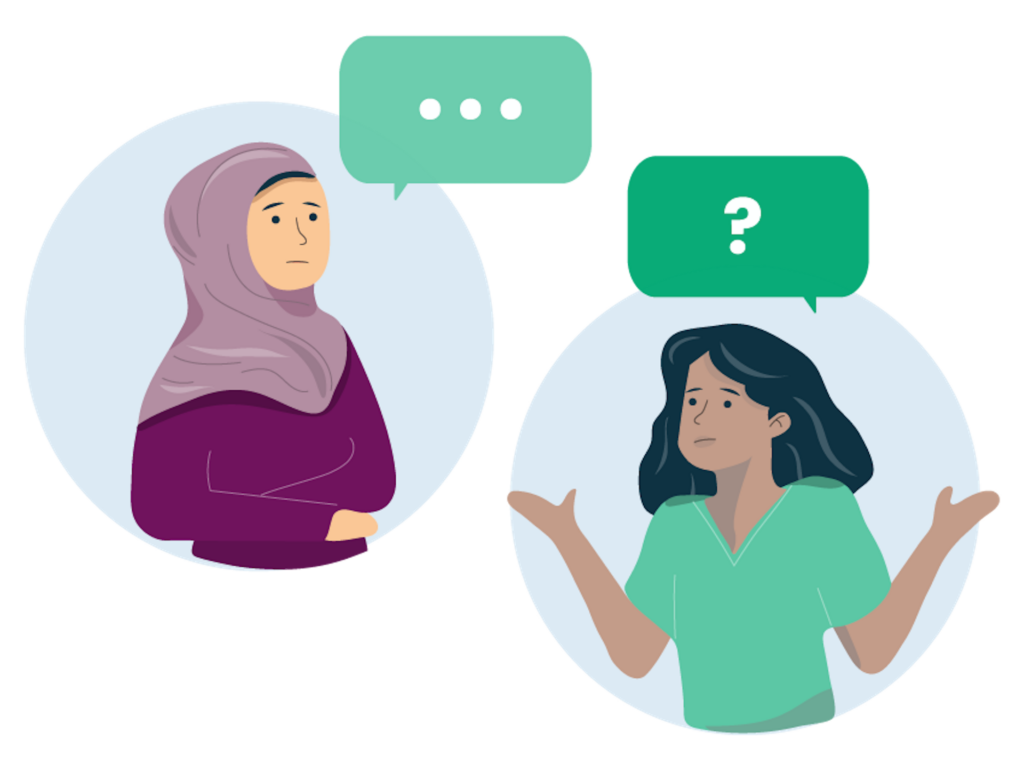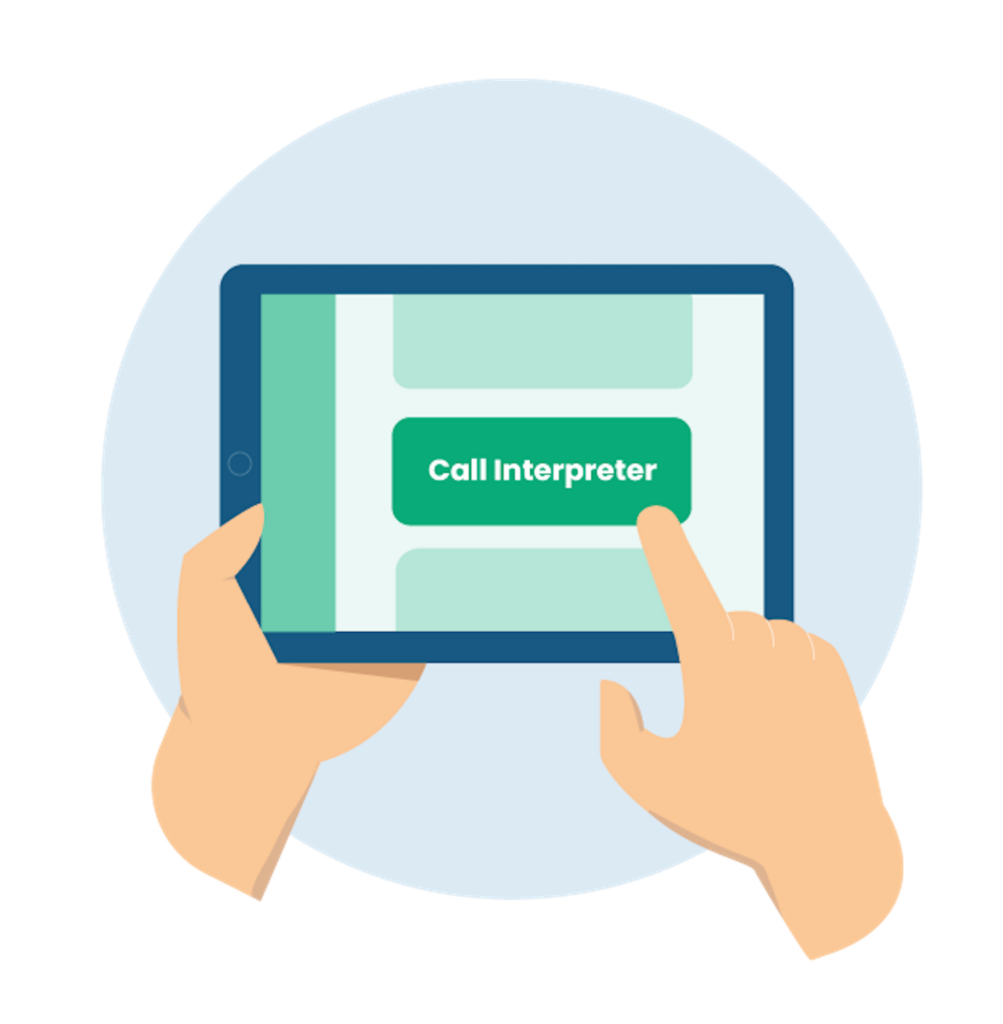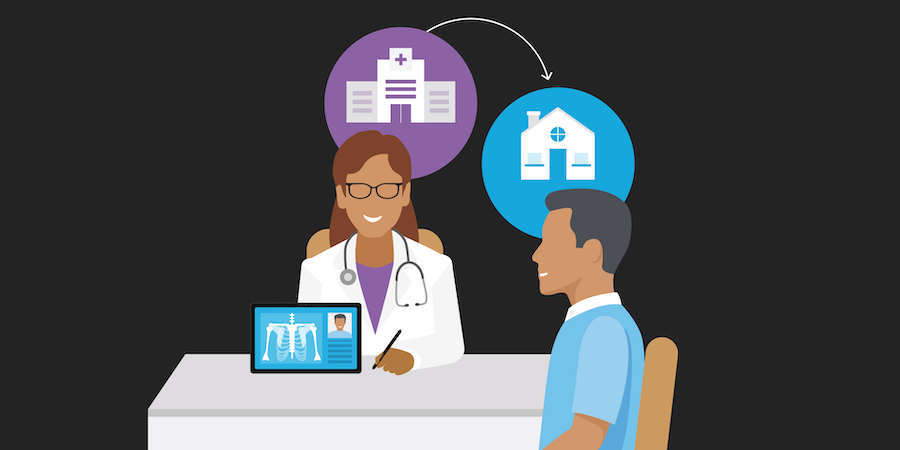If you or a loved one has ever been trapped behind a ventilator, you remember the heartbreaking moments when they tried desperately to convey their symptoms or ask for help using ineffective hand gestures. Playing charades with clinicians is also a familiar experience for patients who have challenges with communicating verbally or speak a different language than their doctor. Communication gaps are more than frustrating; they can delay diagnosis and treatment and lead to worse health outcomes. New bedside mobile solutions like VidaTalk could help change that.
Laura Goodrich, a speech language pathologist at the Ohio State University Wexner Medical Center, has seen the difference that bedside technology can make for patients. When a patient who’d had an acute stroke was unable to speak, Goodrich recommended VidaTalk, which allowed the patient to communicate nonverbally by tapping images on a tablet. The patient began asking with his care team simple but important questions like “When can I see my family?” and expressed that he had felt lonely when he couldn’t communicate before. At one point, the patient used VidaTalk to say “I’m hot.” The clinician turned on a fan and the patient began to cry with relief to “finally have his voice be heard.”
After being introduced to VidaTalk, the patient started making rapid progress in physical therapy. Soon he was speaking in full sentences and even began walking. “Without the use of the VidaTalk app, I do not think he would have participated as well in therapy and would not have made the progress he did,” says Goodrich.
How VidaTalk works
Invented by two doctors and developed with funding from the National Institutes of Health (NIH), VidaTalk is a first-of-its-kind enterprise app that helps patients and their caregivers transcend speech and language barriers to communicate effectively with healthcare providers. Patients navigate a series of app menus to select words, phrases or images that represent what they want to say. They can also type or write on the touchscreen with their finger or with a stylus. Then the tablet talks for them.
 VidaTalk features include:
VidaTalk features include:
- One-touch phases: The user interface is designed to be accessible to patients with limited motor function, so common phrases are available with a single tap.
- Bedside translation: Featuring more than 40 languages, VidaTalk can be used by the majority of patients and their care providers.
- Interpreter services: The app can be integrated with most interpreter services, so interpreters can be accessed from every bedside and instantly begin translating through the app, via voice or video call.
- Music and video therapy: Music therapy has been shown to improve health outcomes. VidaTalk holds an extensive library of playlists and music videos, custom-created for hospital patients.
- Robust analytics: Monthly reports provide administrators with insight into how patients are utilizing the app, such as the most commonly used phrases and the usage stats in each department of the hospital.
- Instant rollout: Once bedside tablets are in place, VidaTalk can quickly be added to every patient room. Tutorials are built into the app, but most people find the interface intuitive and self-explanatory.
Improve the patient experience with mobile
From check-in to remote monitoring, get your free guide to elevating care with mobile technology. Download Now
Studies show that VidaTalk decreases stress for nonverbal patients and improves neuromotor coordination. Goodrich says it can also improve the overall patient experience and health outcomes.
“VidaTalk has allowed patients to be more involved in communicating their wants and needs, as well as making their own decisions,” she explains. “With several patients, I have seen an overall change in motivation and attitude once they have established a way to communicate via the Vidatalk app. I believe their ability to communicate helped facilitate more participation in therapy and a quicker recovery.”
 Scaling communication with bedside tablets
Scaling communication with bedside tablets
VidaTalk isn’t the first software to address hospital communication barriers, but older, computer-based applications are often bound to a single computer per department, and only available for one patient at a time. That’s all changing in the era of bedside tablets. At leading hospitals across the country, these mobile devices allow patients to communicate more easily with their care team and their family, access important personal health information and entertain themselves during their hospital stay.
“In addition to VidaTalk, patients can also use our tablets to log into their MyChart account,” says Goodrich. MyChart is a popular online patient portal. “While they are hospitalized, they can review their treatment team, send messages to their care team and place meal orders. Patients can also access the internet for Facebook chat, music and YouTube.”
This trend has taken off in the last two years, with many hospitals deploying tablets at every bedside to improve the way patients connect with their providers. Using mobile device management (MDM) solutions like Samsung Knox Manage, hospitals can scale tablet programs quickly, and their IT departments can seamlessly deploy new apps like VidaTalk across an entire organization in minutes. Improved patient care doesn’t have to wait.
“Access to communication is a basic human right and should be provided to all patients,” says Goodrich. “The VidaTalk app has helped us to facilitate communication for more patients to be more involved and independent in directing their care. It allows patients to build more rapport with their healthcare providers, resulting in a better healthcare experience.”
From check-in to remote monitoring, get your free guide to elevating care with mobile technology. And discover more Samsung digital health solutions designed to improve the patient experience, streamline clinical communications and vividly bring your brand to life.









